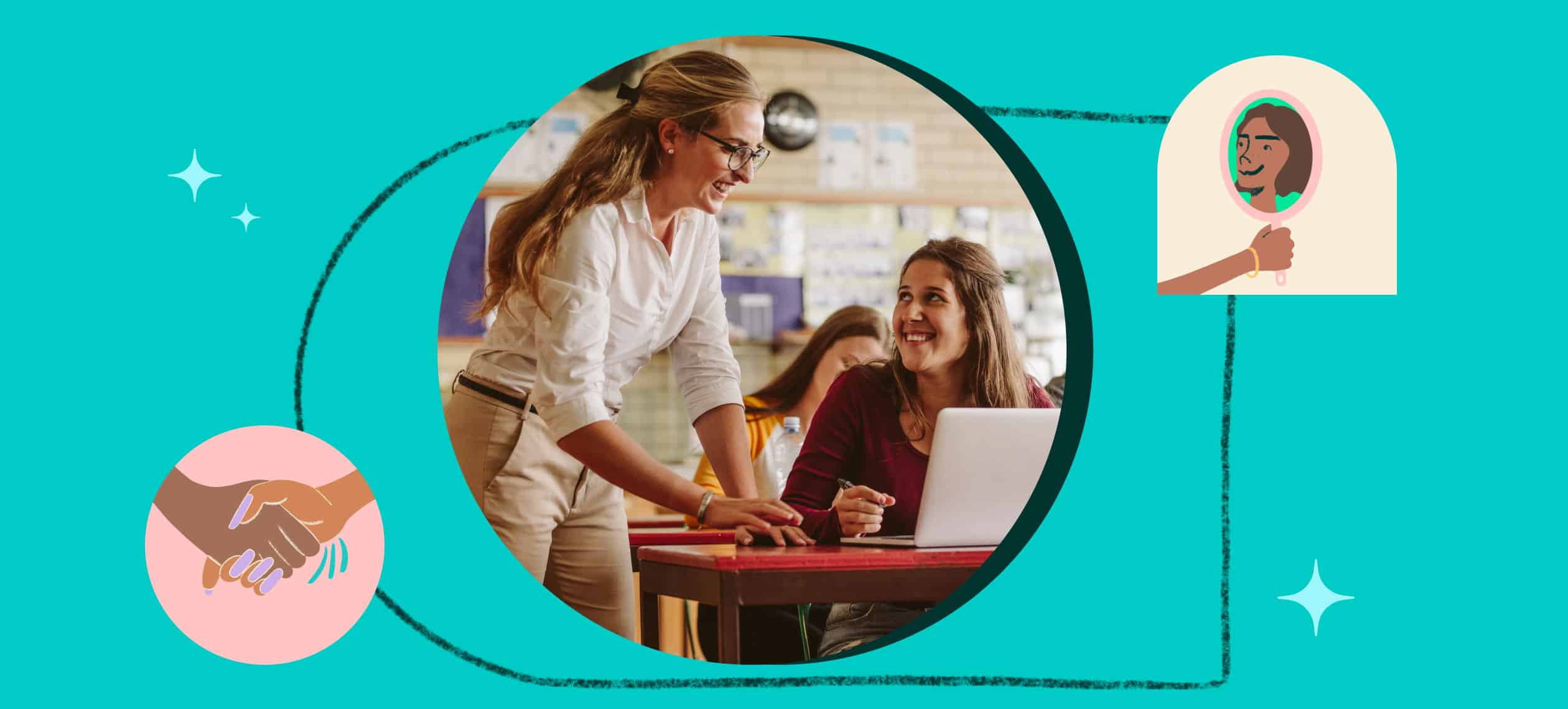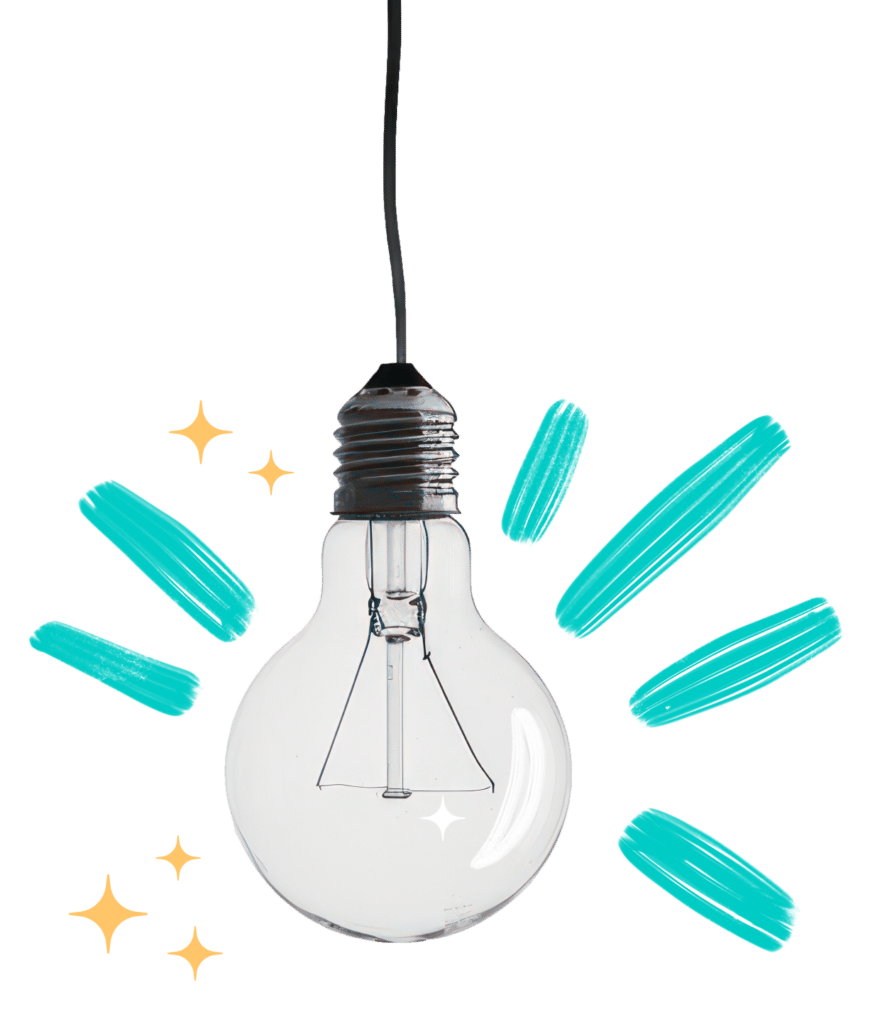


This is a quick self regulation strategy to practice with your students and it only takes a literal minute of your day. For younger students, you may start by providing options for their mindful moment, such as a guided breathing exercise or grounding practice. For older students, the options may be more open-ended. The better students get at this, the longer they may be able to sustain their mindful moment. If time allows, sharing about their mindful moments can also be a valuable social skills activity for students.
Goal setting is an important skill with a big impact across all five domains of social emotional learning. Through setting and working towards goals, students have the opportunity to practise self-awareness, build self-confidence, reflect on social dynamics, and actively engage with the decision-making process. Setting goals as a class encourages social awareness, communication, and teamwork. When goal setting becomes a normal practice in the classroom, students are more likely to apply it outside of school as well.
SEL is most effective when teachers practice it too, but with heavy teaching loads, limited planning time, and busy personal lives, teachers may sometimes put their own wellbeing on the back burner. Providing a platform for teachers to reflect on or share their own SEL practices is a healthy reminder that their mental health is just as valuable as everyone else’s at school.
Delve into evidence-based strategies for building and implementing inclusive SEL programs. Essential for directors of counseling and counselors, this infographic elucidates how to integrate SEL interventions that engage all students, particularly those from marginalized groups.

It’s tempting to pile on encouragement for good grades and strong academic performances, but students are more likely to develop a growth mindset when they know that what matters most to those around them is their effort, not their end result. Try replacing exclamations of “Great job!” with comments like, “I can see how hard you worked on that!”
Social emotional curriculum is a practice, not a set of memorized facts, and adding elements of it to the daily routine encourages students to engage in the practice throughout the school day. Emotional check-ins can be as simple as having students color a square in to symbolize their feelings or writing one word onto an index card. This social emotional learning activity not only provides students with a reminder to make space for their feelings; it also gives teachers valuable data about how their students are doing emotionally and might help teachers to identify any patterns of concern.
When students engage in SEL work, it’s helpful to keep it all in one place. This provides opportunities for reflection and allows students to review their progress throughout the year. Voluntary sharing of selected projects or entries through the year can be a valuable social skills activity for students. Allowing them access to these journals during free time also reinforces their personal practice of the skills they learned through more structured activities.
No matter how much time our students spend with us at school, the number one influence in their lives is rarely in the classroom. Engaging parents in the SEL curriculum can help them to reinforce these skills at home using shared vocabulary and practices. Including an SEL Tip of the Month in parent newsletters, sending home an introductory letter with each new unit, or simply opening conversation with parents in other ways can help them to understand what their children are learning, build their own understanding of SEL skills, and reinforce these important practices outside the classroom.
Learn about the common misconceptions related to the implementation of SEL curricula in schools and districts.

Integrating SEL activities like mindful minutes, goal setting, and emotional check-ins can make social emotional learning more engaging and impactful. These activities are designed to be easily implemented into daily school routines, enhancing students’ emotional and social competencies.
Goal-setting SEL activities enhance students’ self-awareness and confidence, fostering important social and emotional skills. This process encourages students to engage more deeply with their learning environment and peer interactions.
Emphasizing effort in SEL activities promotes a growth mindset among students, valuing their dedication and process over just outcomes. This approach encourages students to persist through challenges and view setbacks as opportunities for growth.
Even with a great curriculum, simply going through the motions of teaching SEL doesn’t guarantee that students will embrace these important practices. Social emotional learning activities can reinforce skills beyond the classroom walls and help to create habits that last, even after students move onto higher education or employment. But it’s important to foster real-life application of the skills learned in class.
Integrating scenario-based discussions, role-playing activities, and interactive workshops gives students the chance to internalize and adapt the skills you’ve presented.
Take media literacy for example. While not immediately apparent as an SEL activity, exploring this topic with students can help them become better decision-makers and also teach them how to regulate the negative emotions misinformation can invoke. At the same time, media literacy has enormous application in today’s digital climate.
If you want to explore how a media literacy lesson might be useful in teaching life skills for 15 minutes or less, check out our free lesson plan and printable resources by clicking the button below.
